Zero waste with hand woven fabric

Last year I had a very special sewing experience: I got to sew hand woven fabric for the first time.
The fabric was woven by Tracy of Knit-Spin-Weave, our local yarn shop. You may remember she made a zero waste bolero in hand woven fabric for the Zero Waste Sewing blog tour. I dropped in to visit before Zero Waste Sewing was published to show her a copy of the book.
Tracy thoughtfully turned the pages and said Hmmmm, you know, a lot of these could be made with hand loomed fabric. Why don’t you contact Ashford and see if they’re interested in a zero waste project for their magazine?
So I did, and they were.
Ashford are a New Zealand company who make spinning wheels, looms, yarn and related accessories. They were wonderful people to work with.
I designed a spiral skirt; Tracy wove the fabric for it then I did the cutting and sewing.


As this was my first time with hand woven fabric, I pumped Tracy for information. Here’s some of the things I found out:
What’s the best way to sew seams? They can be sewn like regular plain seams, bearing in mind the fabric is fairly thick. Selvedges can be lapped-and-stitched, maybe with decorative stitching.
How do I control fraying? Iron a strip of lightweight interfacing over the cut line before you cut it and/or stitch the edge (eg rows of straight stitching, zig zag or overlocking).
Can you only weave rectangles? Yes. Squares and rectangles. Not triangles.
What’s the widest width fabric you can make? Up to 100cm (on a Gilmakra Viking 4 shaft jack loom) but many weavers use a narrow loom then join pieces as needed. The popular Ashford SampleIt loom weaves 25cm or 40cm widths.
What do you do with the beginning and end of the weaving? Control the fraying in the same way as a seam allowance.
What’s fulling? Fulling is slightly ‘felting’ the fabric. It causes it to shrink and locks the warp and weft together. You do it after taking the fabric off the loom.
How much does the fabric shrink? About 10%-15% during fulling.
How do you calculate the amount of yarn needed? There’s an app to help calculate it based on a swatch.
Weavers are in the enviable position of being able to make unique fabrics in custom widths, however, Tracy says many weavers are hesitant to cut their fabric and some don’t move past scarves and table mats (albeit beautiful ones). She thought zero waste might make it easier to cut, since none of the precious cloth is wasted.
Tracy’s fabric was so lovely a visiting sewing friend wanted to take it home with her.
We actually did 3 skirts for the article but in the end only one was used. Ashford kindly sent us all the yarns. Here’s a gallery:
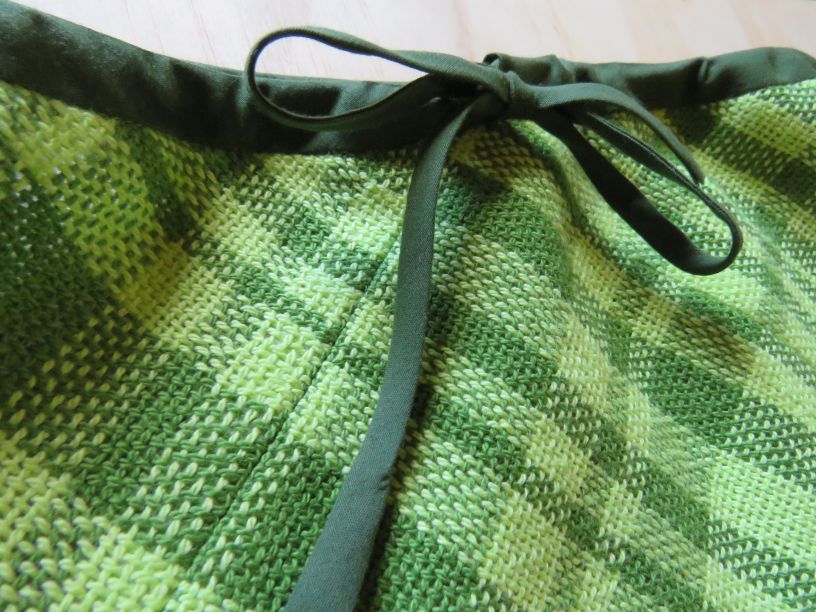
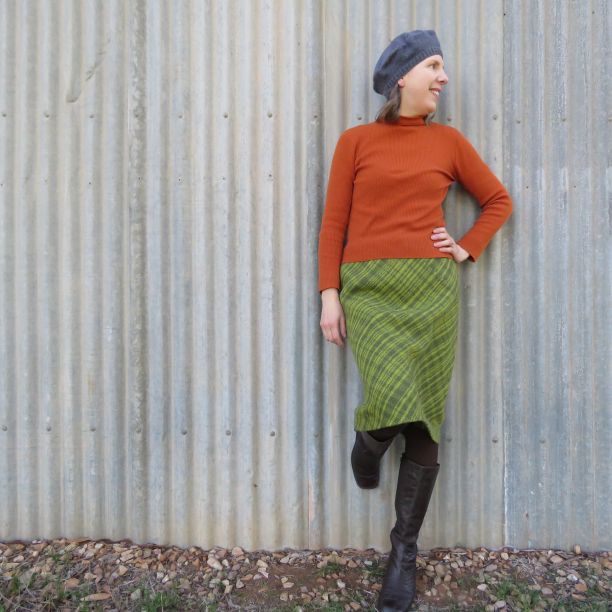
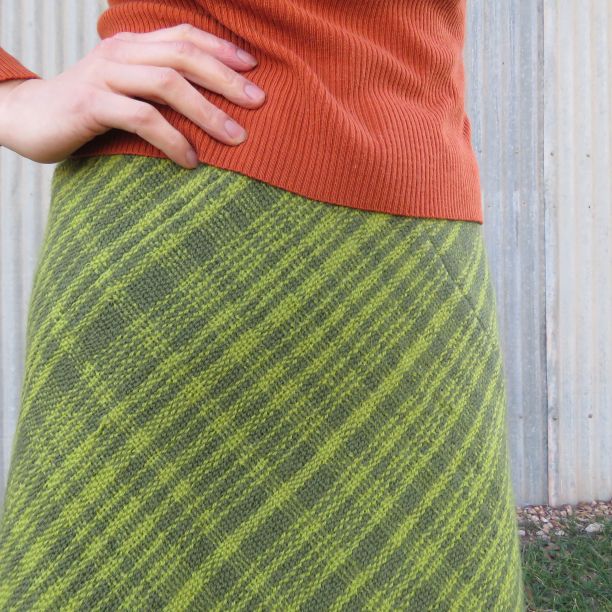
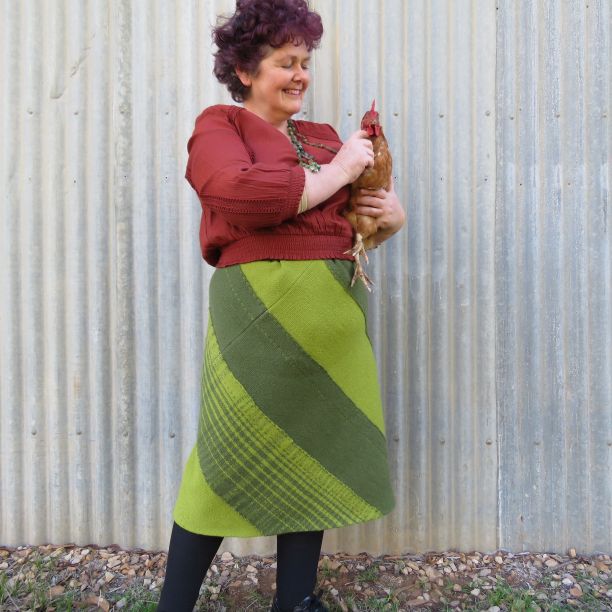
Not everyone has access to a loom that’s wide enough, and Tracy thought it would be good to show the skirt woven on a narrow loom. I like this skirt the best.
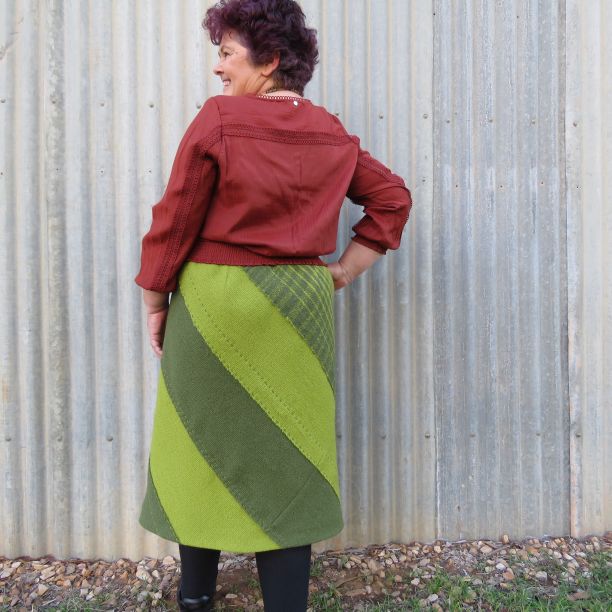
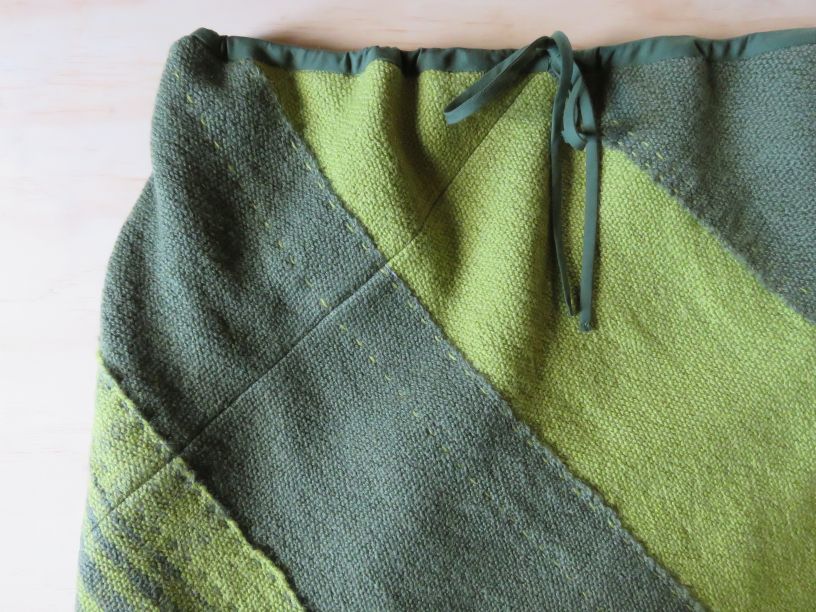

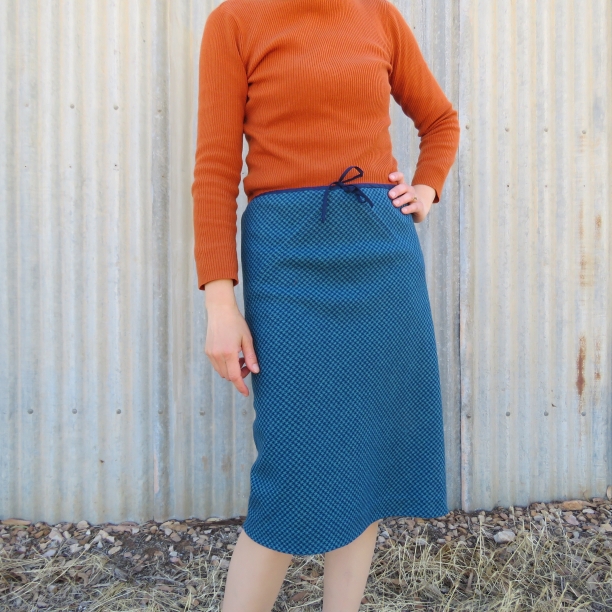
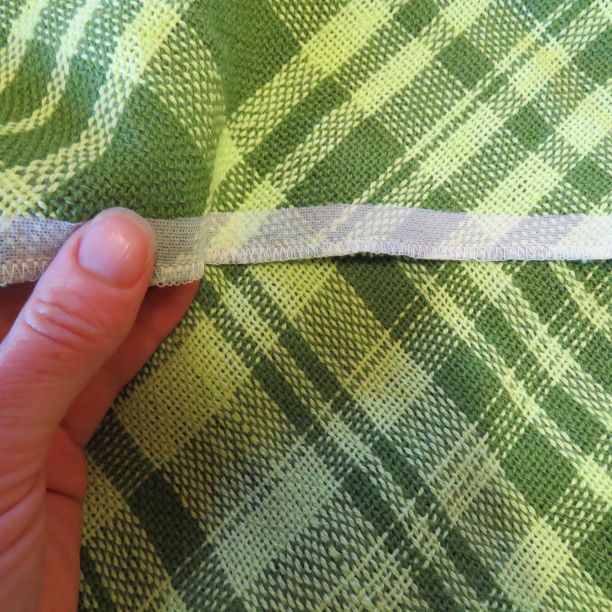
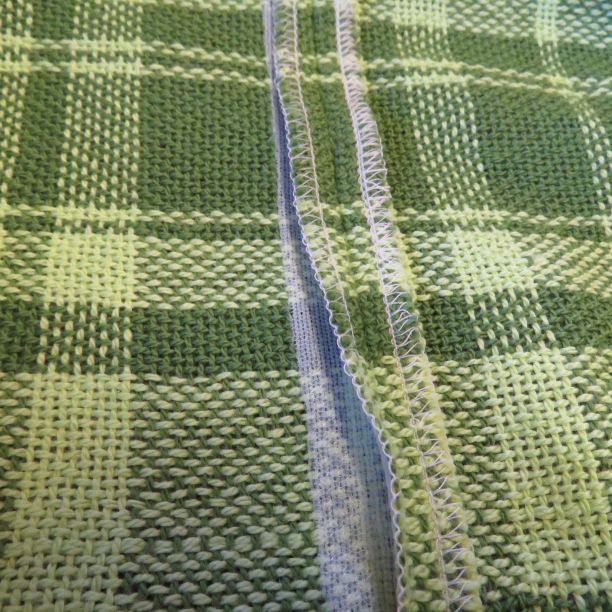
If you ever get the opportunity to sew with hand woven fabric, take it!!!
The pattern for the skirt is in Ashford’s annual magazine which came out in November. The mag can be bought via subscription direct from Ashford, or a newsprint version is available from your Ashford dealer.
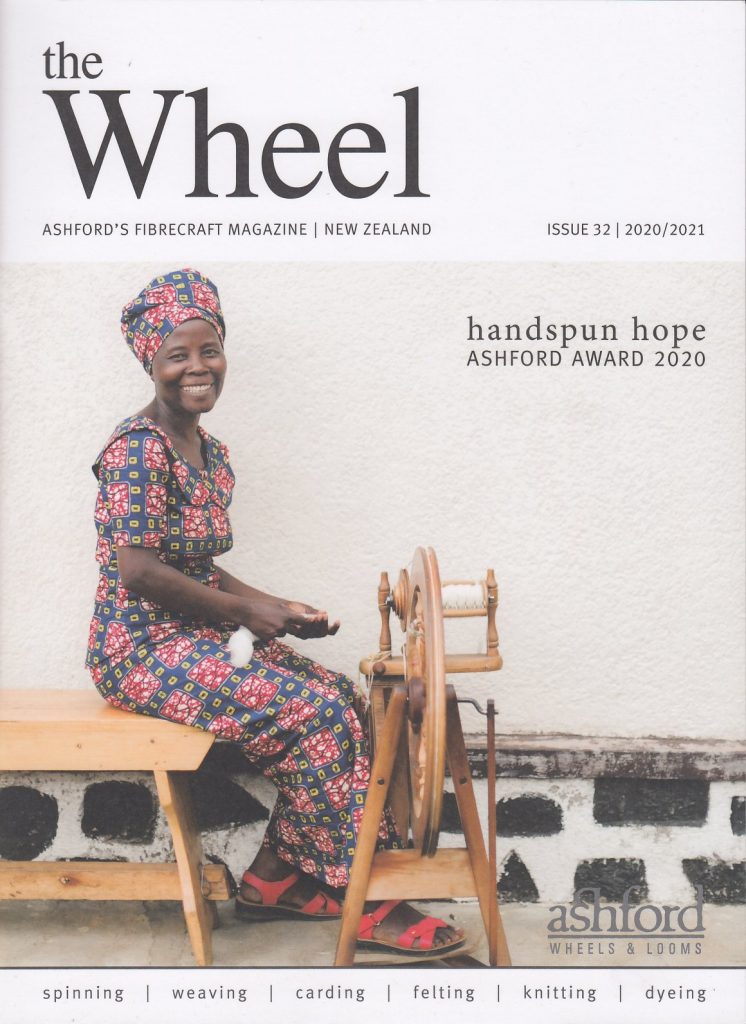
If you’re making the skirt, I recommend making a little paper model first so you can understand how the skirt is constructed. I also recommend making the lining first and trying it on, then when you make the skirt you’ll have the lining all ready.
The skirts in this blog post are on display at Knit-Spin-Weave, which re-opens tomorrow.
Cheers!
Love this pattern. I will try to use with fabric from my stash.
I tried to subscribe to the wheel magazine but the payment link wouldn’t work for me.
I’ll keep trying.
Love your blog Liz!
Tricia
Thanks Tricia:) Wheel magazine is a lovely publication, and interesting even if you don’t weave or spin.
Beautiful and amazing
Thanks Lesley!
Can I now make up this skirt please?
Today’s blog was great and I enjoyed re reading this ZW
Pattern using Tracy’s beautiful hand woven fabrics.
Well done, clever Liz.
Anthea
Thank you Anthea 🙂
I love that you’ve worked with handwoven fabrics to create a zero-waste skirt, Liz. My major in college was weaving and though we never had to make any garments, I was always wondering how to make a garment out of a handwoven fabric without cutting it. I think it’s part of why I’m drawn to zero-waste sewing.
Thanks for taking on this challenge!
Mary
I didn’t know you did weaving, Mary….but I’m kind of not surprised!
Tracy told me about a fb group called Get Weaving, which encourages weavers to wear their weaving – check it out 🙂 It isn’t zero waste but it’s lovely to see hand woven fabric being worn.
Love the design! Does the magazine include details about the yarn and sett used for the plaid fabric?
Hi Corinne, they talk about the yarn but the sett is random and made-up-as-you-go.
Very pleased I finally found this!
Thank you!